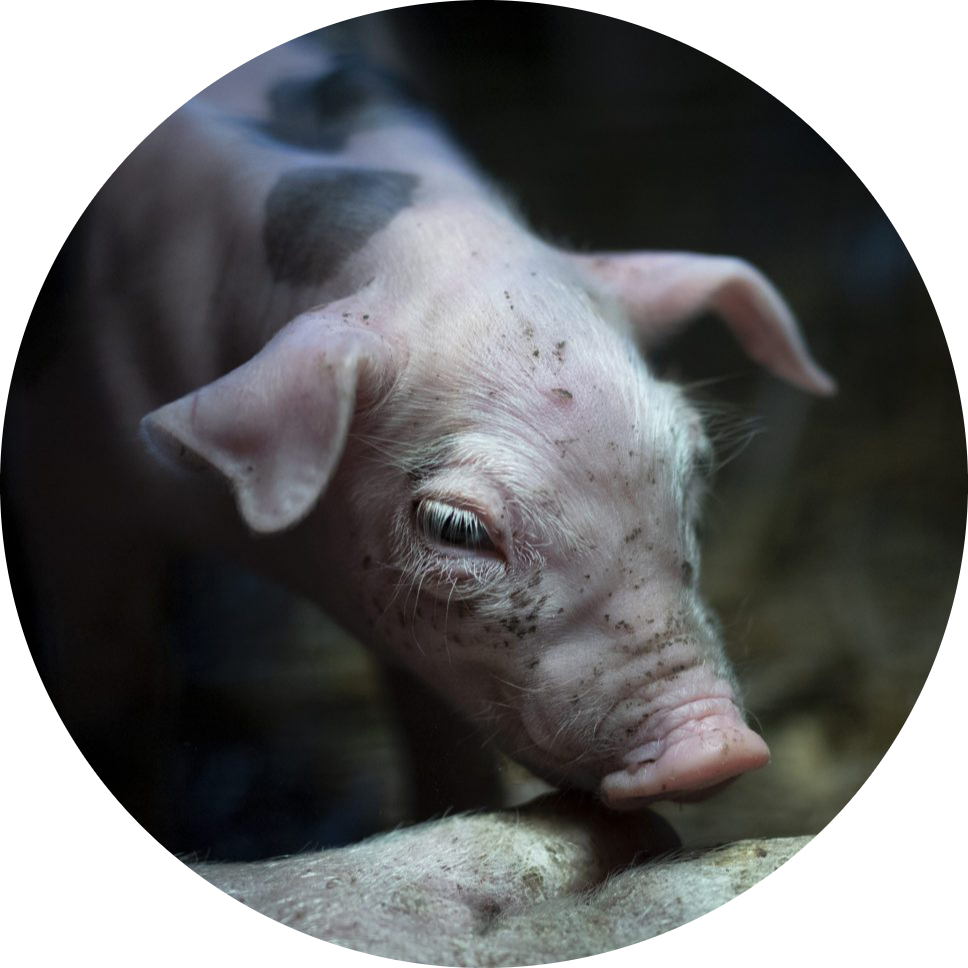The Choice Not to Eat Animals
More and more of us are choosing to take animals off the menu and into our hearts.
Most of us care about animals. We wince at their suffering. That reaction has a name: compassion. If you know little about the routine abuse of animals raised for food, that’s because the meat industry doesn’t want you to know—their profits depend on it.


Born to suffer
Not long after drawing their first breath, animals raised for food are routinely mutilated in attempts to make them “fit” a cruel and unnatural system. Turkeys’ toes are cut. The tips of chickens’ sensitive beaks are seared off. Calves’ horn tissue is burned out of their skulls. And piglets’ tails are cut off through the bone. All without any pain relief.
Photo: Andrew Skowron
An unnatural order
Today’s farm animals have been selectively bred for one thing: profit. This takes a severe toll on animals’ bodies. In fact, all of the most common farm animal breeds now scarcely resemble their natural ancestors. Turkeys raised for meat have developed breasts so artificially large that the only way they can reproduce is through artificial insemination. Pigs and chickens have been ruthlessly selected to grow unnaturally large and fast. And every year, millions of baby chickens die from heart failure before they reach “slaughter age” at just six weeks old.
Photo: Konrad Lozinski/Open Cages
A mockery of motherhood
The meat, egg, and dairy industries have reduced mothers to “production units”. For most of her life, a mother pig is confined to a cage so small she can’t turn around. She can’t properly interact with her babies, or intervene as they cry out in pain from having their bodies mutilated. Dairy cows are kept almost continually pregnant in order to produce milk. Year on year their newborn calves are torn away, leaving mother cows to bellow for their missing babies, sometimes for days.

“Waste products”
If you really want to know whether the meat industry cares about animals, consider how it disposes of the babies it deems economically “worthless”. Every year, millions of day-old male chicks are gassed or shredded alive—simply because they’re of no use to the egg industry. Piglets who don’t grow fast enough are routinely swung by their back legs and slammed onto concrete, at times in front of their mothers and siblings.
Photo: Jo-Anne McArthur/Animal Equality
The final insult
For many farm animals, their first glimpse of the outside world will be from the truck that transports them to slaughter. Confused, exhausted, and hungry, animals from all systems—including factory farms and free range—end their lives in the same frightening facilities. Chickens, who account for nine in every ten land animals killed for food, often suffer broken bones and fully conscious slaughter in these final moments. Some are even boiled alive.
Photo: Jo-Anne McArthur/We Animals
Sea animals
The science is in: fish feel pain. And yet, fish and other sensitive marine animals are killed by the billions in uniquely disturbing ways. Dragged from the ocean depths in giant trawling nets, fish can suffer rapid decompression trauma which can cause their swimming bladders to burst and their eyes to balloon out of their heads. If they aren’t crushed under the weight of other victims, they’ll spend their last minutes thrashing and gasping as they slowly suffocate on the surface. Sadly, fish farms only prolong the suffering of these sensitive animals.
Photo: Andrew Skowron/Open Cages
What About "Humane Meat"?
While some farming systems are undoubtedly better than others, degrees of suffering exist across all systems. Whether animals are born on factory farms or free-range farms, the traumatic separation of mothers and infants, routine mutilations without pain relief, the mass disposal of unwanted babies, debilitating physical afflictions caused by selective breeding, and distressing transport and slaughter practices are all common.
There’s a reason factory farms and slaughterhouses don’t offer public tours. These truths are hard to stomach. But with knowledge comes power—and now you know just how much power your food choices have to change the world for animals.










